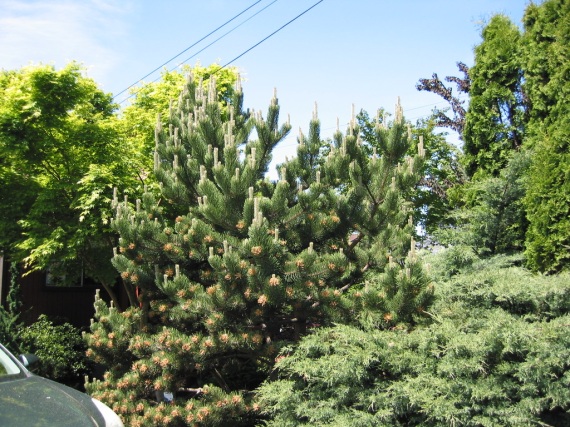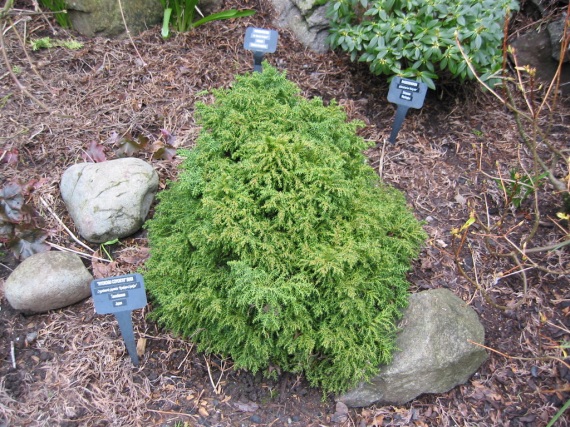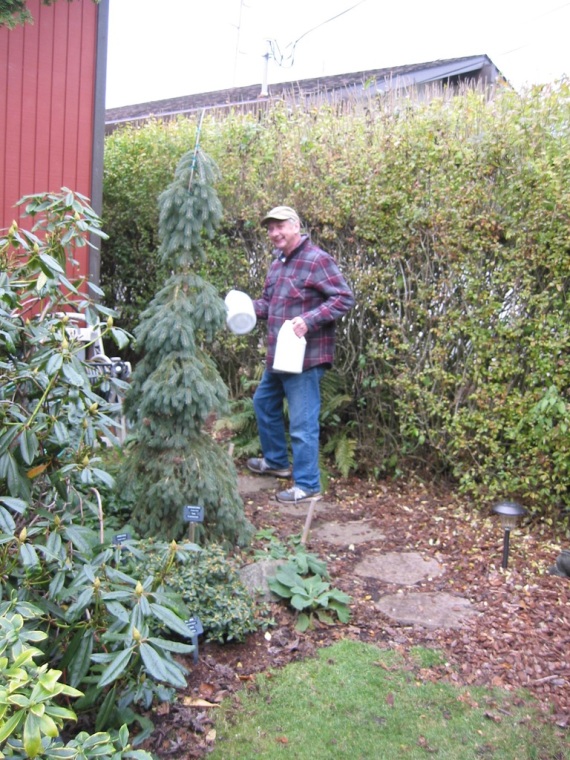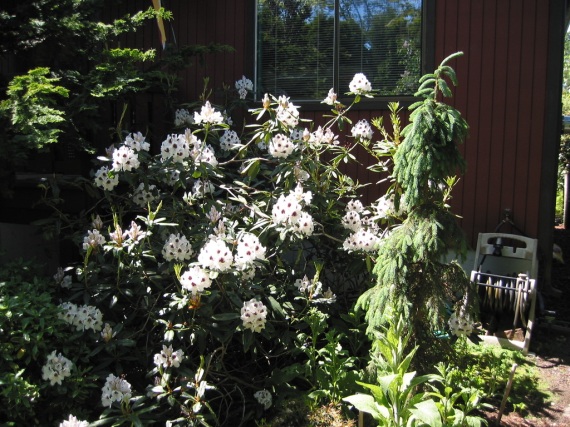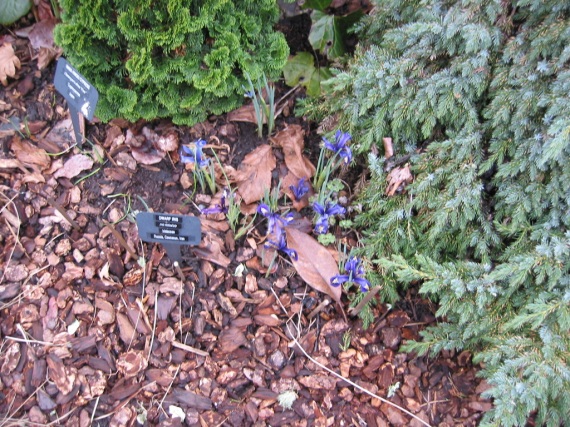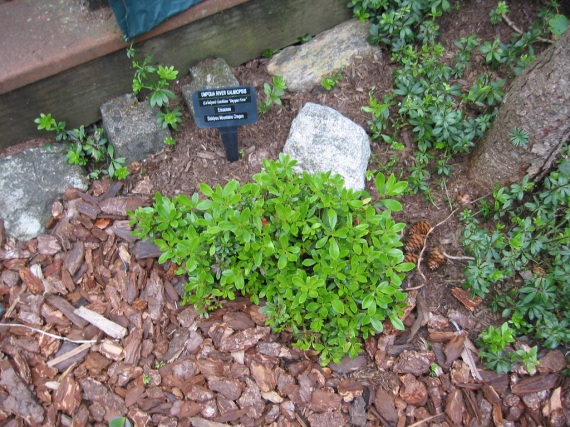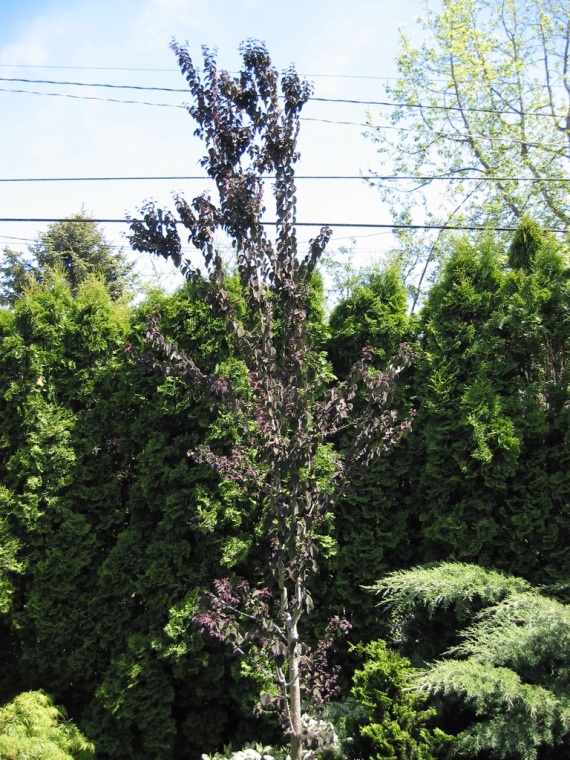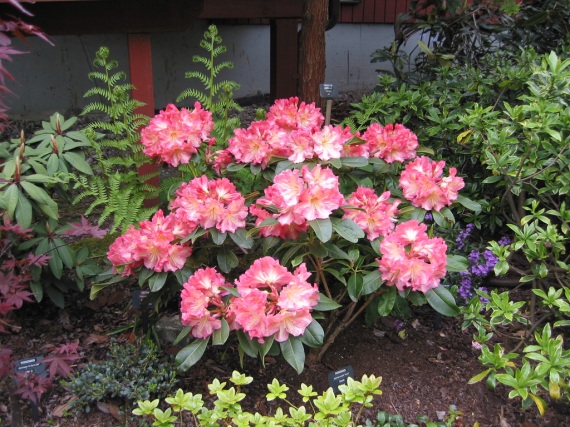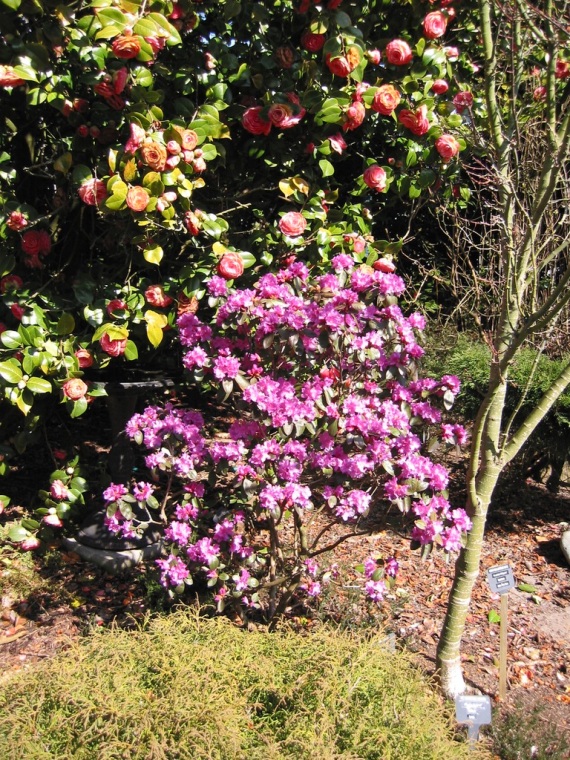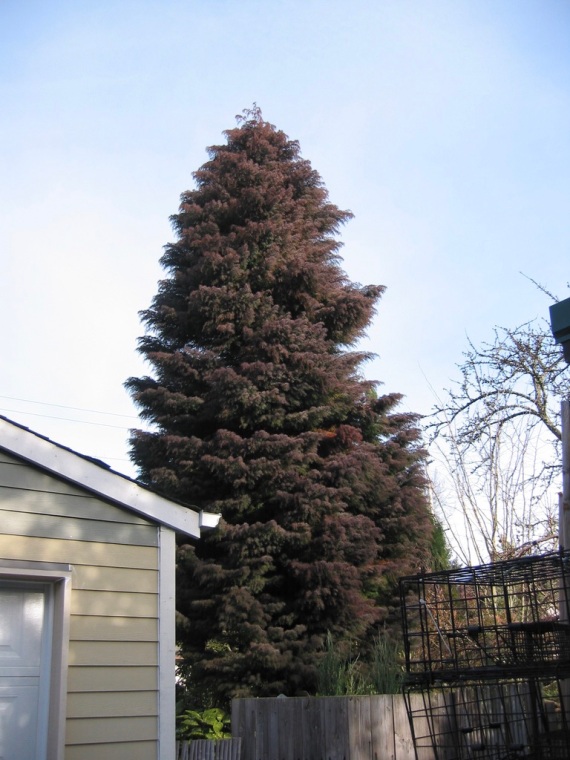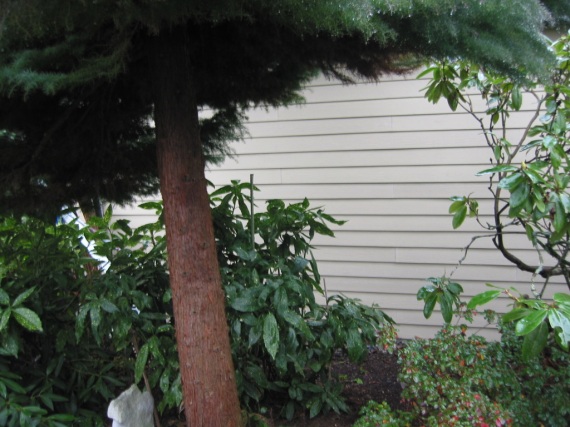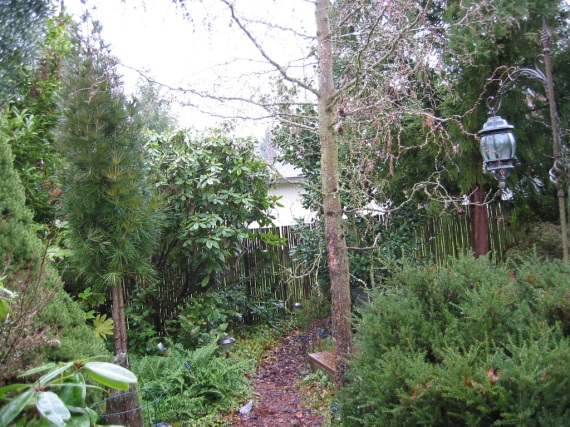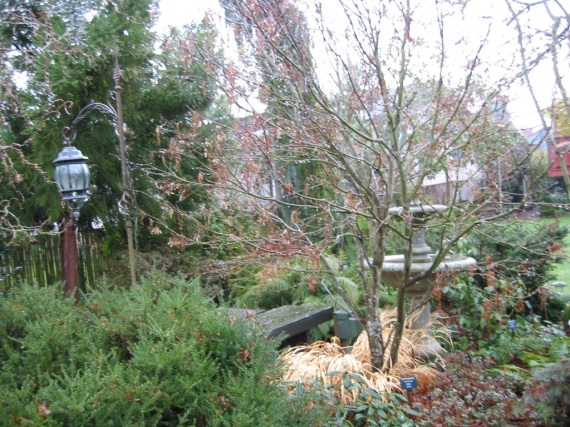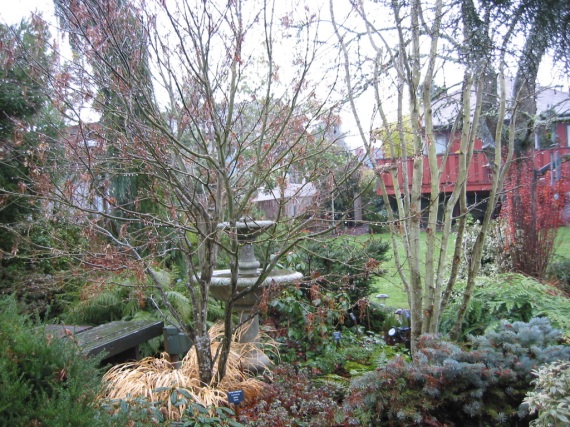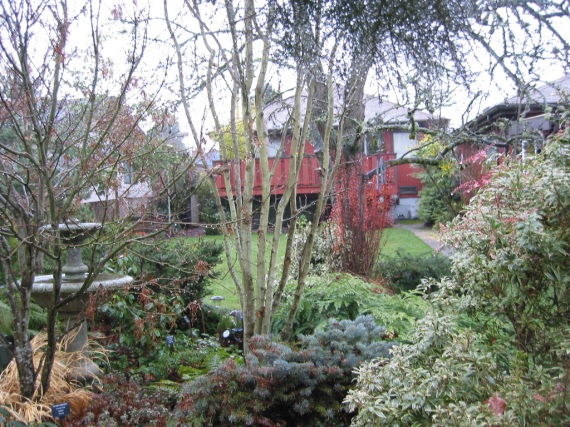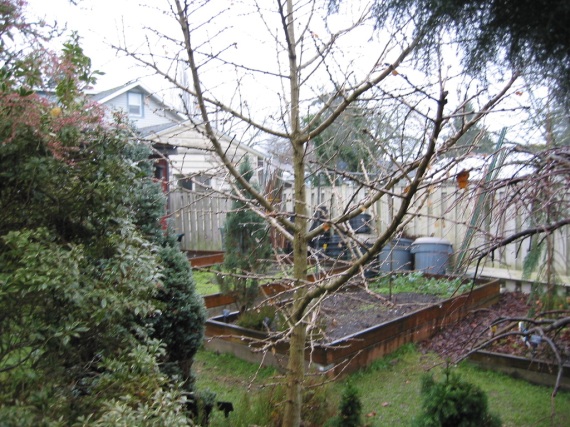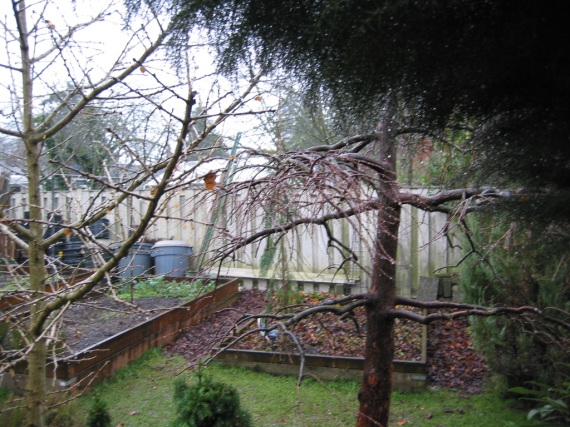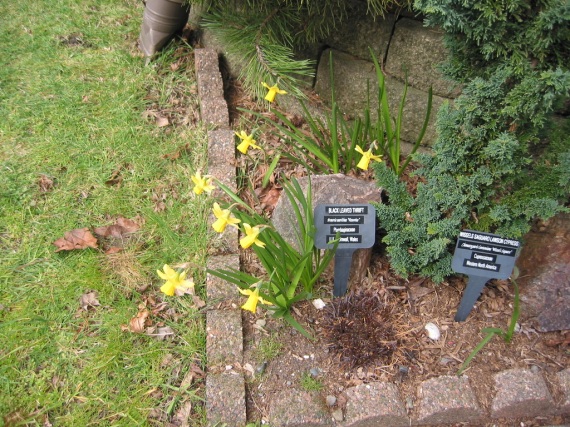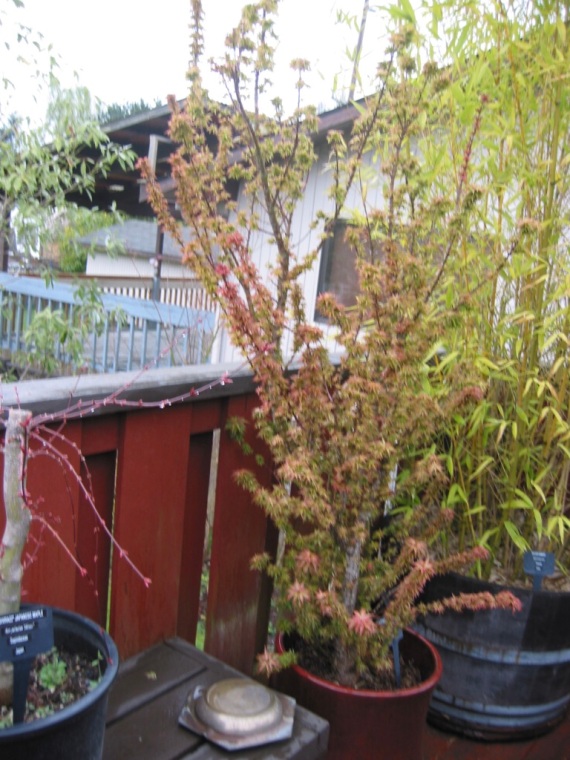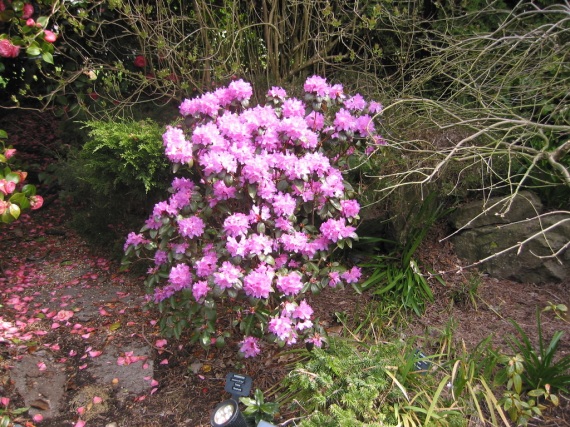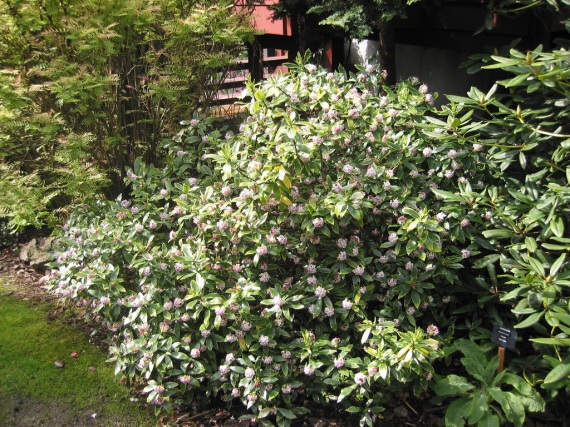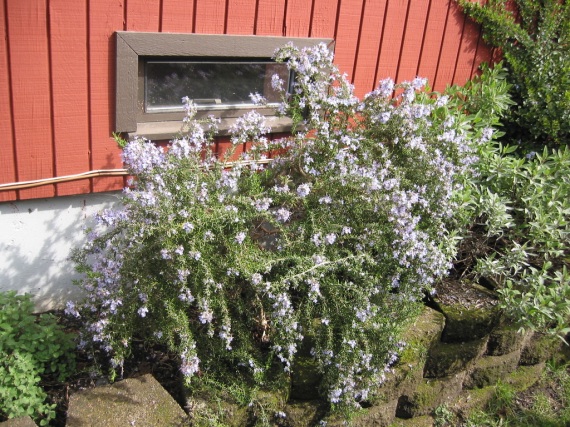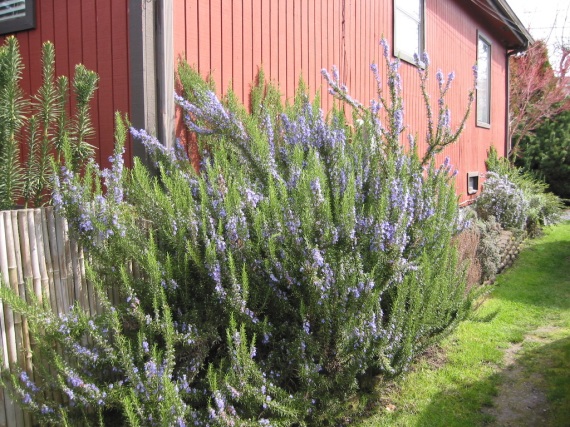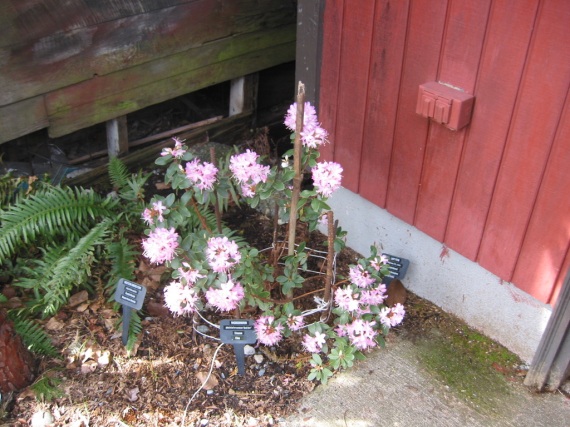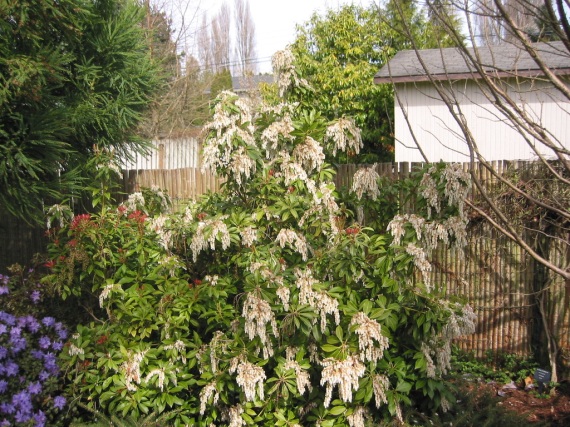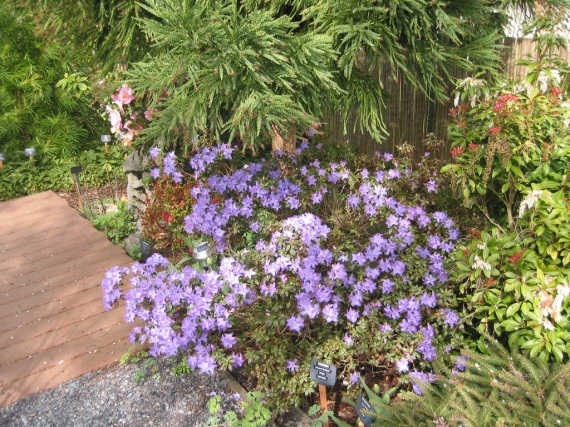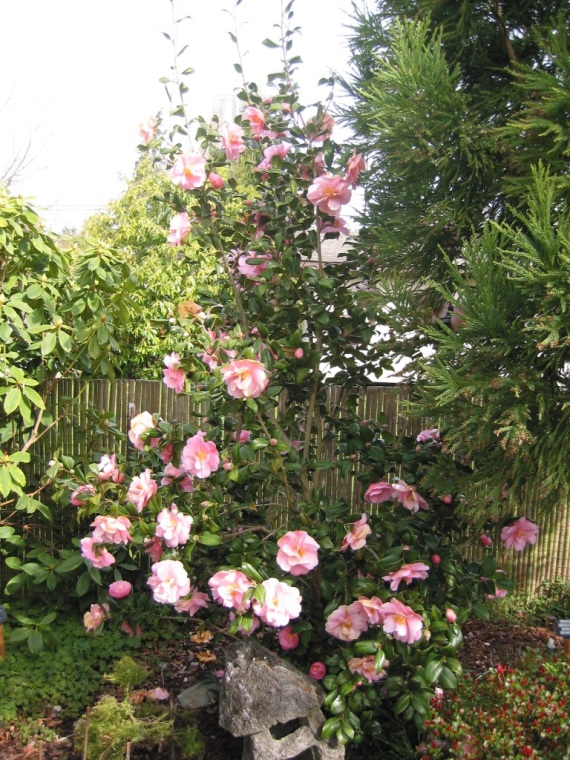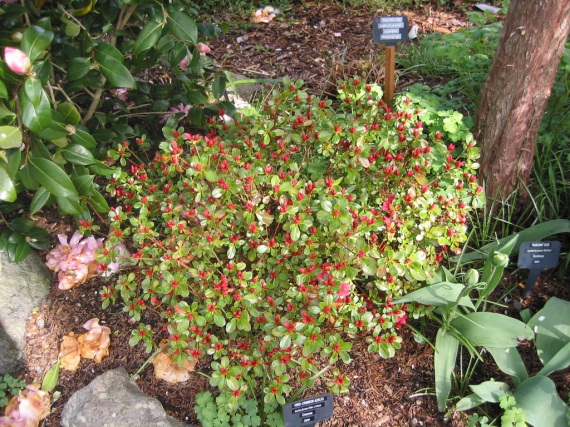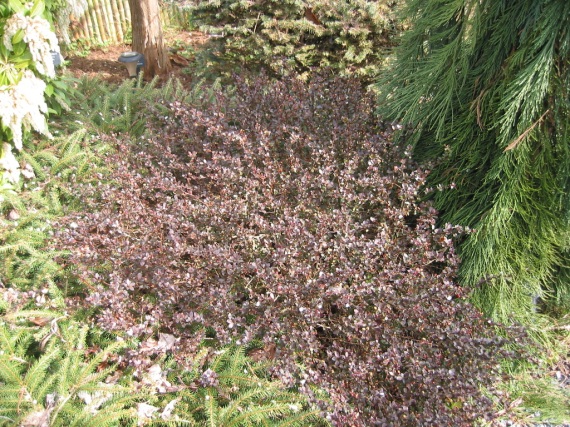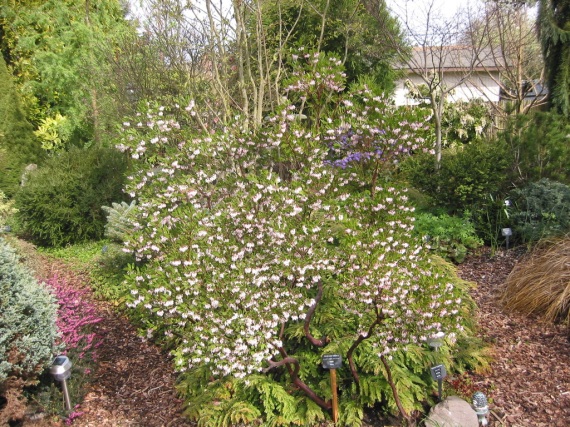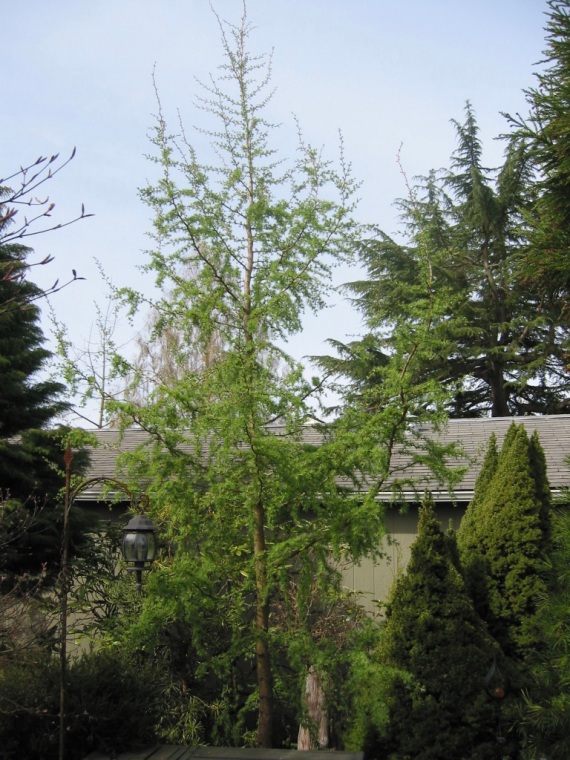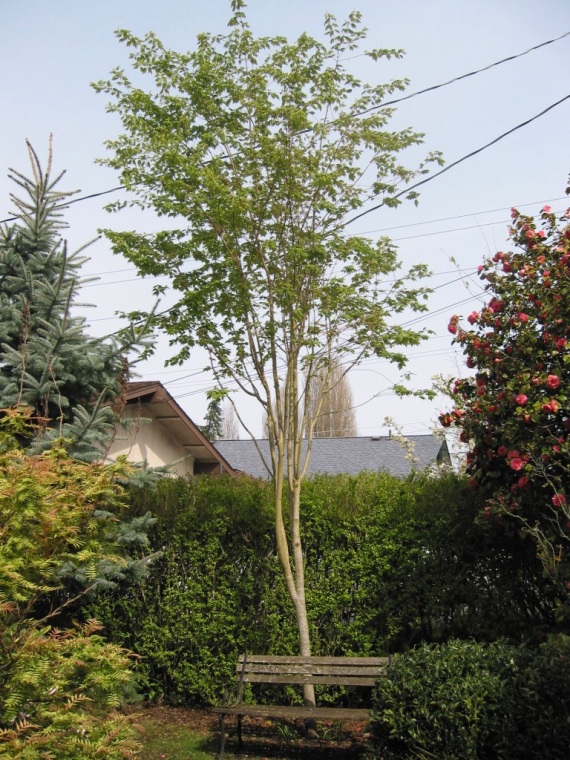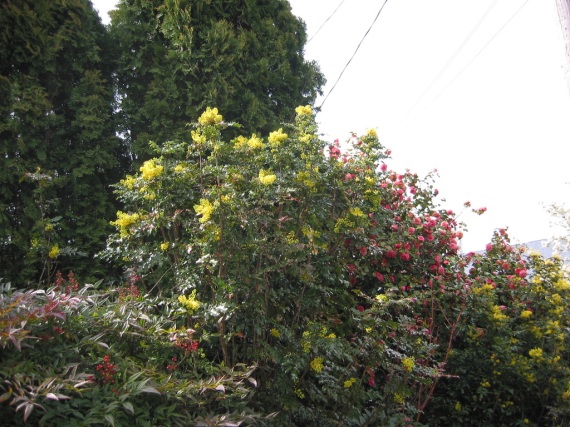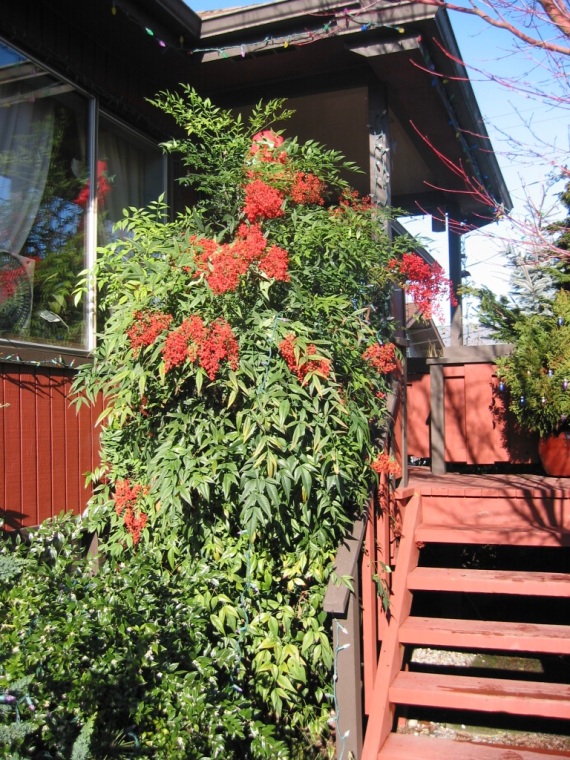Oregon Green Pine/Pinus nigra “Oregon Green” – March
As I said in my last post I’m doing a few posts on how various plants have grown lately. Most of the photos are from this year – just a couple of days ago in fact. A few are from over the winter. They’re in no particular order. Off we go….
This tree is right on the edge of the driveway and provides a significant break between it and the garden within. This is a photo from a few months ago when the candles were still white. It’s one of the attractions of this tree. It’s called an Oregon Green pine, but it’s actually an Austrian/European Black pine. It was found or created at a nursery in Oregon so it got that name too. It’s a strong grower with very muscular branches. I pruned out the center to display the amazing structure of this tree. There will be photo of that later on in this series of random photos.
Maupin Glow Incense Cedar/Calocedrus decurrens “Maupin Glow” – now
This tree was found near the town of Maupin, Oregon, thus its name. A man was hiking and saw a brilliant flash of gold and found this tree. The new foliage is this brilliant striking yellow/gold. As the foliage grows it turns green, as you can see on the inside. It has luscious dark reddish bark and the wood smells wonderful, as do the crushed needles. Too bad it’s sited next to the dilapidated garage next door. It was the only place I could plant it.
All the websites say this will only get 15′ x 5′ (10 year size). This tree is about 18′ x 15′ after 7 1/2 years in this spot and 2 years in a pot on the deck before that – just under 10 years. I don’t really know how big it will get, but there is one old nurseryman who says it will eventually get 40′ or 50 ‘ tall. I suspect, and hope, he’s right! It can get that tall where it is without any interference. I hope I live to see it!
I grew up near the Sierra Nevada mountains in California, and the species of this tree is a major element of the forests there. I’ve been in love with this tree most of my life. It’s really wonderful for me to have it here in our garden. Reminds me of my youth running free in the woods. I was a real nature boy, living in the mountains and forests. I learned much wisdom there.
Green Jewel Dragon Sugi/Cryptomeria japonica “Ryokogu coyokyu” – now
One of the several Cryptomeria, or Sugi in Japanese, in the garden. The species of this tree is a large forest tree and is the national tree of Japan. The wood is prized for building temples and shrines, like the Hinoki. There are literally hundreds of cultivars of it. This is one of the smaller ones. It’s only about 18″ tall x 14″ wide, after 6 growing season here. It grows very slowly, only 1/8th of an inch a year, maybe. It looks like a craggy little mountain to me, but apparently someone thought it looked like a Dragon, thus its common name in Japan. Whatever, I love the little conifers like this.
Louie – the most wonderful man in the world! – Last fall
Ours is an inspirational love story. We didn’t meet until we were both 57 years old – proving it’s never too late to find your true love, and that’s what we did. We’ve been living lovingly together for over 12 years now and are quite sure we’ll be together for the rest of our lives. We plan to live into our 90’s – we have to be able to watch the garden grow after all…!!
Sappho Rhododendron/Rhododendron “Sappho” – 3 weeks ago
This is one of the few plants Louie planted some 30 or more years ago. It’s an old time favorite of mine from 40 years ago. It has beautiful lavender buds that open to pure white flowers with deep purple hearts to them. That’s my study window above the shrub, so I get a wonderful view of it when it’s in bloom. Named for the ancient Greek poet Sappho, who lived on the island of Lesbos, from which Lesbians get their name.
Dwarf or Reticulated Iris/Iris reticulata – early February
This is a very dwarf form of the well known Iris. As you can see they bloom very early in the year, which is pleasant when not much else is in bloom. They’re so dainty, with such deep vibrant colors. They’re well established after only 3 years here.
Umpqua River Kalmiopsis/Kalmiopsis leachiana “Umpqua form”
This may actually be one of the truly rare plants I have. Most are either unique and unusual or semi rare. But this is considered to be the very first member of the Ercaceae family – the Heath and Heather family, that contains everything from Rhododendrons and Azaleas to Blueberries, Cranberries and Huckleberries, and so many more. It was found in 1930 in high mountains in the Kalmiopsis Wilderness in the Umpqua National Forest in Southern Oregon. It has lovely little bell shaped flowers, a hallmark of the Ericaceae. It’s grown well here since I planted it in 8/18. I feel lucky to have it here in the garden.
Carstens Wintergold Mugo Pine/Pinus mugo “Carstens Wintergold” – Last fall
We saw this little mugo in the winter when it was this glorious golden color. That’s only two years ago. I’ve found that many plants that color up in the winter need sun to do that, tho not all of them. To be sure it would change I set this pot up on this bench last fall where it can get the most sun possible on the deck. It worked perfectly and you can see the result.
Red Fox Katsura/Cercidiphyllum japonicum “Rot Fuchs” – now
We planted this as a 12′ tree in February 2015. It’s the tallest tree we’ve ever brought home, and it stuck out the back of the VW van about 2 feet. In the time it’s been here it’s gotten too tall to measure, and I can go to 21 -1/2 ft with my bamboo measuring sticks. I pruned back the lower side branches a year ago and last year it put out a few new branches, but not many. But this year it’s literally covered with new growth. There are little branches all over it – some 5″ long and some 18″. All this beautiful purple red, which are especially lovely when you see them against the sun.
The name red fox, or rot fuchs in German, comes from a fanciful idea that the foliage looks like a fox’s tail as the branches grow upward on the tree. Ours isn’t doing that yet, but it looks like it’s going to over the next few years. I’ve seen photos of it doing that and it looks nice. But I like this one too. It’s got a nice gangly look to it that I find attractive. I love the leaf colors too. In summer they turn a deep blueish green. And in fall it turns a golden color. A very unusual tree.
The Back Garden – now
This is what it looks like from the deck right now. There is still new growth on the conifers but most of the other plants have already put on their new spring growth. It’s been an exciting time! So many things to look at when I take my morning stroll thru the garden. It’s been warm enough that I’ve been able to do them naked, as I did last year. (See World Naked Gardening Day last spring). The Weeping Giant Sequoia on the right has finally gotten taller than the plum tree that’s been here for 50 years. A few others are getting closer to its size as well. It really does feel like a little forest when you’re in the middle of it now. After 10 or 11 years the trees and shrubs really do feel sorta mature. It’s a nice place to spend time.
Naselle Rhododendron/Rhododendron “Naselle” – May
I’m so psyched by this rhodie. I had it where it didn’t get much sun and it bloomed poorly. So when I cleared out this space I moved it here and look at the results! It’s covered with these magnificent creamy salmon flowers in huge trusses of 8 or 9 flowers. I’m so happy with it. It shows why sunlight is good for plants. It’s in short supply in our garden, so I use it carefully.
PJM Regal Rhododendron/Rhododendron “PJM Regal” – February
This is one of the earliest plants to bloom every year, as you can see. I moved it to this location a couple of years ago but we’ve been growing it since March 2015. It grows slowly but is always covered with these beautiful magenta blossoms. This is another one I can see clearly from my study window. I’m lucky to have such a nice view of the front garden.
OK, I’ve reached the point where my back once again says I’ve done enough for today. Time to go water the garden. I have several more of these to do so I don’t wanna abuse myself too much. I hope you’ve enjoyed this random look at more plants in our garden. I hope you come back for the next ones too.
Happy (almost) Summer!
Steve
